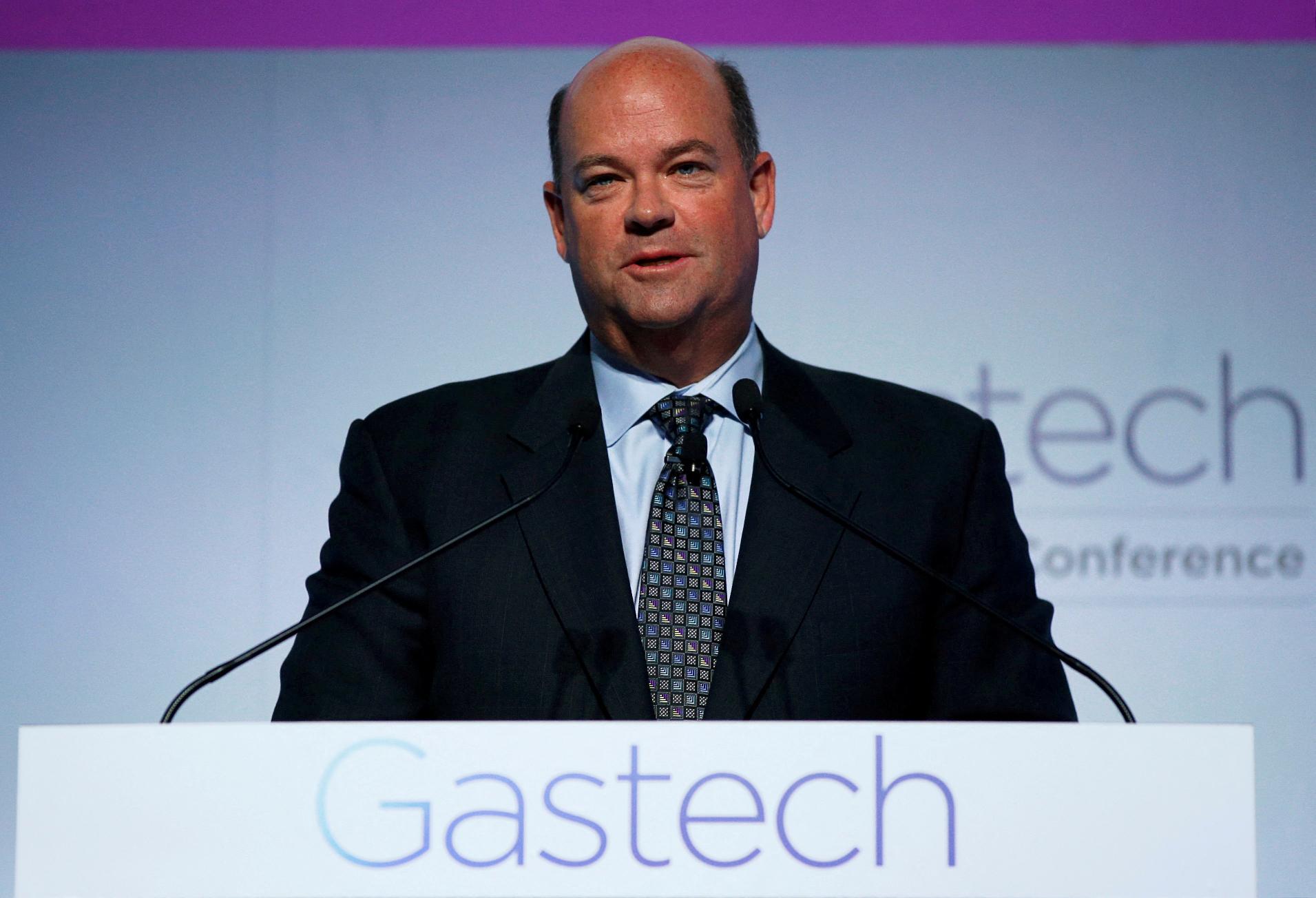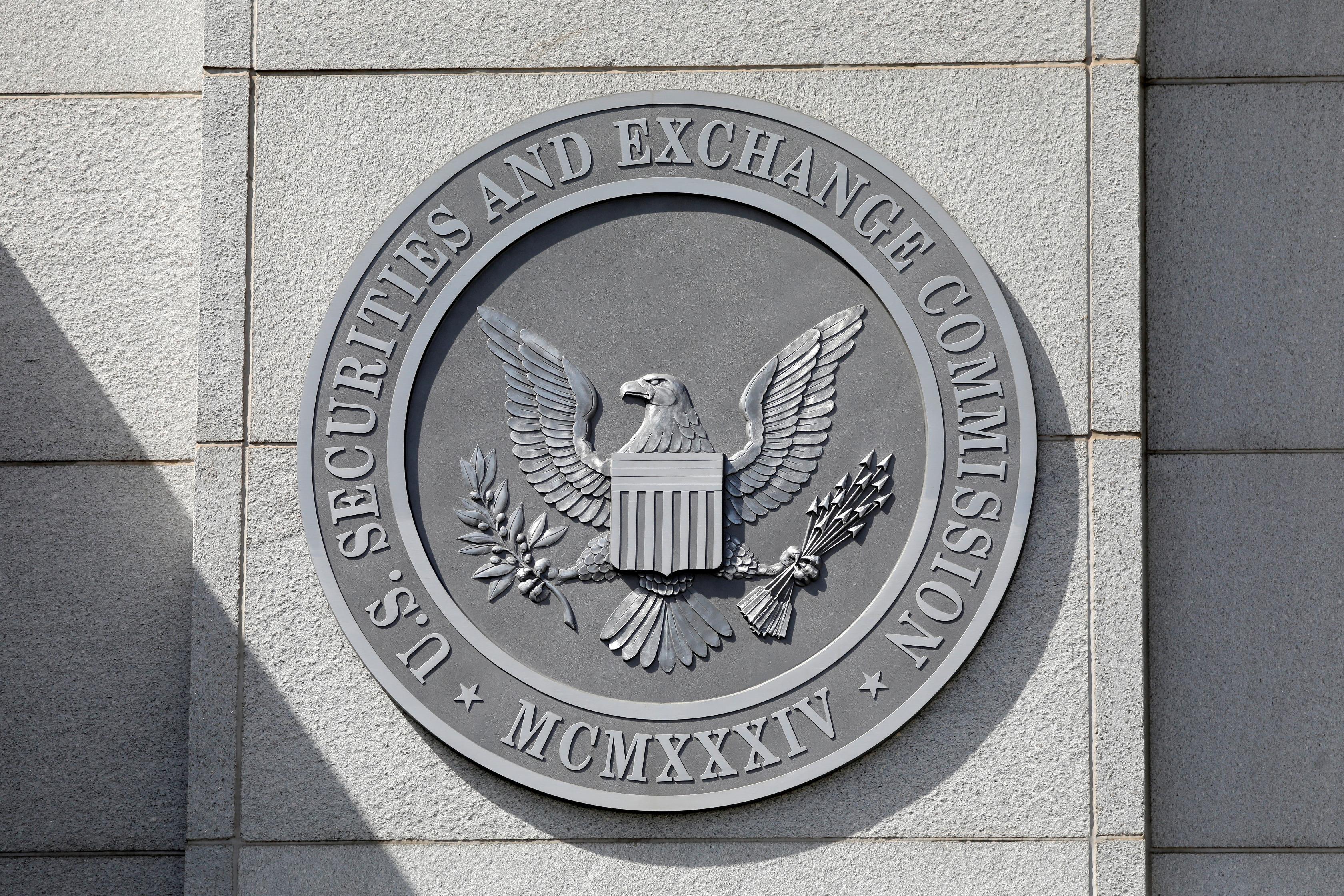
2024-09-17 19:47
HOUSTON, Sept 17 (Reuters) - ConocoPhillips (COP.N) , opens new tab CEO Ryan Lance on Tuesday called on the U.S. government to end "this crazy LNG (permit) pause" and allow the country to lead the liquefied natural gas industry. The White House implemented in January a pause on permits to give time for the Department of Energy to take a "hard look" at the environmental and economic impacts of the industry. The pause temporarily stopped approvals for exports from LNG projects. A federal judge in July blocked President Joe Biden's administration from continuing to pause the approval of applications to export LNG. "You gotta stop this crazy LNG pause from going forward," Lance said during the Gastech conference in Houston. "We absolutely need permitting reform, and we need more infrastructure." Sign up here. https://www.reuters.com/business/energy/conocophillips-ceo-calls-us-end-crazy-lng-permit-pause-2024-09-17/

2024-09-17 19:22
WASHINGTON, Sept 17 (Reuters) - The Biden administration will seek up to 6 million barrels of oil for the Strategic Petroleum Reserve, a source familiar with issue said on Tuesday, a purchase that if completed will match its largest yet in the replenishment of the stash after a historic sale in 2022. The administration will announce the solicitation as soon as Wednesday to buy oil for delivery to the Bayou Choctaw site in Louisiana, the source said, one of four heavily guarded SPR locations along the coasts of that state and Texas. The U.S. will buy the oil from energy companies for delivery in the first few months of 2025, the source said. The Department of Energy has taken advantage of relatively low crude prices that are below the target price of $79.99 per barrel at which it wants to buy back oil after the 2022 SPR sale of 180 million barrels over six months. West Texas Intermediate oil was $71.70 a barrel on Tuesday, up after Hurricane Francine shut crude output in the Gulf of Mexico last week, but worries about demand have kept prices relatively low in recent weeks. President Joe Biden announced the 2022 sale, the largest ever from the reserve, after Russia, one of the world's top three oil producers, invaded Ukraine. The invasion had helped push gasoline prices to a record of over $5 a gallon. The administration has so far bought back more than 50 million barrels, after selling the 180 million barrels at an average of about $95 a barrel, the Energy Department says. While oil is now below the target buyback price, conflict in the Middle East and other factors can quickly boost oil prices. In April, the U.S. canceled an SPR purchase of oil due to rising prices. The reserve currently holds 380 million barrels, most of which is sour crude, or oil that many U.S. refineries are engineered to process. The most it has held was nearly 727 million barrels in 2009. Sign up here. https://www.reuters.com/markets/commodities/us-seek-6-million-barrels-oil-reserve-amid-low-oil-price-2024-09-17/

2024-09-17 19:01
US probing imports from China to prevent circumventing Russian ban Russia sent large amounts of uranium to China from 2022 to 2023 Any circumvention could hurt U.S. effort to cut funds to Russia Circumventing ban could harm push to build U.S. uranium supply chain WASHINGTON, Sept 17 (Reuters) - The U.S. government is probing whether China is supporting Russia's nuclear industry by importing enriched uranium from its neighbor and exporting its own production to the U.S., which recently banned Russian uranium imports, Reuters has learned. U.S. House lawmakers passed the ban on Russian enriched uranium in December 2023 as part of a U.S. effort to disrupt President Vladimir Putin's ability to fund Russia's war on Ukraine. That month, shipments of enriched uranium from China to the U.S. shot to 242,990 kilograms (535,700 lb), according to data from the U.S. International Trade Commission. The imports are significant because from 2020 to 2022 China did not send any enriched uranium to the U.S. In May this year, the month that Biden signed the ban, China again sent the U.S. a large amount of uranium - this time totaling 123,894 kilograms (273,139 lb). The U.S. Department of Energy "along with other relevant agencies is closely tracking imports from China to ensure the proper implementation of the recently enacted Prohibiting Russian Uranium Imports Act," a department spokesperson said, a development that has not been previously reported. U.S. officials are watching the imports from China and other countries to "ensure they are not importing Russian uranium as part of a scheme to export material produced domestically that they would otherwise have used in their own reactors," the spokesperson said. There was no immediate response from the Chinese foreign ministry in Beijing to a request for comment. Russia is the world's largest exporter of enriched uranium. Imports to the U.S. from Russia through July this year stood at 313,050 kilograms (690,160 lb), down 30% from last year. The ban allows some Russian imports to continue until 2028 if there are supply concerns. Any circumvention of the ban could undermine the U.S. effort to eventually eliminate dependence on Russian fuel for its nuclear power industry, the biggest in the world. It could also weaken the Biden administration's attempts to jumpstart a domestic uranium supply chain, as the ban unlocked $2.72 billion in public funds to do so. China's imports of Russian enriched uranium soared in 2022 and 2023, according to data published by the World Bank. While China is building more reactors that will need a steady supply of uranium, the supplies from Russia could also help it export the fuel, analysts say. "As China may be seeking to carve out a greater role for itself in world enriched uranium markets, increased imports of Russian enriched uranium may facilitate the pursuit of Beijing’s ambitions," said a report in March by the London-based Royal United Services Institute think tank. 'GAMING THE BAN' The imports from China are cause for concern for a U.S. uranium industry. In June Centrus , a company developing enriched uranium capacity, urged the U.S. Trade Representative (USTR) in public comments to raise the tariff rate on enriched uranium from China from 7.5% to 20%, saying that the company's own efforts "could be threatened by imports of enriched uranium from China." The Uranium Producers of America industry group urged USTR in public comments to increase the rate up to 50%. Asked for comment, the USTR, which finalized increases on tariffs on some other goods last week but not on uranium from China, referred to a document that said China's share of U.S. imports of uranium and other materials were small and declining. Jon Indall, counsel for UPA, said his group met in July with the U.S. Commerce Department on concerns that the imports from China represent a circumvention of the ban on Russian uranium. "Gaming the ban is what we are concerned about," Indall said. "We would not like to see that we turn off the Russian tap and all of a sudden we see all this material coming from China." "We're worried about circumvention of the ban," by China, said Indall. "We asked Commerce to take a look at this." The Commerce Department did not respond to a request for comment. Russian state nuclear company Rosatom did not immediately respond to a request for comment. In May Rosatom said that the ban would undermine the global market for enriched uranium but that it would continue to develop its global business. Moscow had been publicly quiet about the ban until Sept. 11 when Putin said Moscow should consider limiting exports of uranium, and other metals in retaliation for Western sanctions. Sign up here. https://www.reuters.com/markets/commodities/us-probes-uranium-jump-china-amid-concerns-over-russian-import-ban-2024-09-17/

2024-09-17 18:45
Retail sales increase 0.1% in August Core retail sales rise 0.3%; July sales revised up Manufacturing production rebounds 0.9% Business inventories increase 0.4% WASHINGTON, Sept 17 (Reuters) - U.S. retail sales unexpectedly rose in August as a decline in receipts at auto dealerships was more than offset by strength in online purchases, suggesting that the economy remained on solid footing through much of the third quarter. The report from the Commerce Department on Tuesday also showed retail sales were a bit stronger than initially thought in July. It combined with the decline in the unemployment rate last month to push against financial market expectations for a half-percentage-point interest rate cut from the Federal Reserve on Wednesday. U.S. central bank officials started a two-day policy meeting on Tuesday. The Atlanta Fed raised its third-quarter GDP growth estimate to a 3.0% annualized rate from a 2.5% pace after the data. The economy grew at a 3.0% pace in the second quarter. "There does not appear to be any reason for Fed officials to start out with a larger 50 basis points rate cut because whatever stress there is in the labor market, it isn't translating into weaker economic demand," said Christopher Rupkey, chief economist at FWDBONDS. "If this is an economy on the brink of recession, consumers certainly don't see it." Retail sales increased 0.1% last month after an upwardly revised 1.1% surge in July, the Commerce Department's Census Bureau said. Economists polled by Reuters had forecast retail sales, which are mostly goods and are not adjusted for inflation, falling 0.2% after a previously reported 1.0% jump in July. Estimates ranged from a 0.6% decline to a 0.6% gain. Retail sales increased 2.1% on a year-on-year basis in August. Online store sales rebounded 1.4% after falling 0.4% in July. Sales at gasoline stations dropped 1.2%, reflecting lower prices at the pump. Cheaper gasoline is likely freeing money for other spending. Sales at sporting goods, hobby, musical instrument and book stores increased 0.3%. Building material and garden equipment store sales edged up 0.1%. Sales at miscellaneous retailers shot up 1.7%, while those at health and personal care outlets increased 0.7%. But sales at food services and drinking places, the only services component in the report, were unchanged after rising 0.2% in July. Economists view dining out as a key indicator of household finances. Furniture store sales fell 0.7%. Receipts at electronics and appliance outlets dropped 1.1%, while those at clothing retailers decreased 0.7%. Receipts at motor vehicle and parts dealers dipped 0.1% and department store sales tumbled 1.1%. Some of the decline in sales was likely due to lower prices rather than volume. Prices for goods, including furniture, have been on a downward trend. Financial markets saw a roughly 59% probability of a 50 basis points rate cut on Wednesday, down from 67% before the retail sales data was published, according to CME Group's FedWatch Tool. The odds of a quarter-point rate reduction were around 41%, up from 33% earlier. Stocks on Wall Street were trading higher, with the benchmark S&P 500 briefly setting an intraday record high. The dollar nudged up against a basket of currencies. U.S. Treasury yields rose. UNDERLYING STRENGTH The Fed has maintained its benchmark overnight interest rate in the current 5.25%-5.50% range for more than a year, having raised it by 525 basis points in 2022 and 2023. Most economists expect the central bank to cut interest rates by 25 basis points on Wednesday, arguing that the economy is not in enough distress to warrant the half-percentage-point reduction being anticipated by financial markets. The unemployment rate fell to 4.2% in August after four straight monthly increases lifted it to a near three-year high of 4.3% in July. The jobless rate has been largely driven by increased labor supply from immigration, which is now slowing. Layoffs remain low by historical standards, leaving the labor market in a position to continue generating steady wage gains that are supporting consumer spending and the overall economy. Subsiding inflation is lifting household's purchasing power. Economists are split on the implications that a declining saving rate could have on spending. Some view the saving rate, which dropped to 2.9% in July and is near levels last seen in 2008, as portending softer spending ahead. They also expect precautionary saving to rise if the labor market deteriorates, which could weigh on spending. Others, however, argued that the government was not fully capturing income earned by undocumented immigrants. They also pointed to strong household balance sheets against the backdrop of higher house and stock prices as supportive of future consumer spending. "For all the signs that low-income consumers are struggling, we think the risks of that weakness migrating up the income spectrum are low," said Michael Pearce, deputy chief economist at Oxford Economics. "Middle- and higher-income households sit on considerable wealth gains since the pandemic, mainly reflecting the surge in housing equity." Retail sales excluding automobiles, gasoline, building materials and food services increased 0.3% last month after rising by an upwardly revised 0.4% in July. These so-called core retail sales were previously reported to have gained 0.3% in July. Core retail sales correspond most closely with the consumer spending component of gross domestic product. Economists estimated that inflation adjusted core retail sales rose 0.1% in August, putting consumer spending on track to grow at an annualized rate of roughly 3.5% this quarter. The raft of upbeat news on the economy was extended by other data on Tuesday showing a sharp rebound in manufacturing production last month, but a downward revision to July's output took off some of the shine. Factory output increased 0.9% last month amid a surge in motor vehicle production after a downwardly revised 0.7% drop in July, the Fed said in a second report. Economists had forecast factory output would rise 0.3% after a previously reported 0.3% decline in July. Business inventories also rose slightly above expectations in July, a potential boost in the calculation of GDP this quarter. "Manufacturing is nowhere near as weak as would normally be the case if the U.S. economy were in recession," said Conrad DeQuadros, senior economic advisor at Brean Capital. Sign up here. https://www.reuters.com/markets/us/us-retail-sales-unexpectedly-rise-august-2024-09-17/

2024-09-17 18:33
NEW YORK, Sept 17 (Reuters) - A former auditor for FTX will pay $1.95 million to settle two U.S. Securities and Exchange Commission cases, including for alleged negligence in auditing the cryptocurrency exchange Sam Bankman-Fried led before being convicted of fraud. Prager Metis, based in New York, did not admit or deny wrongdoing in agreeing to Tuesday's settlements, which include $1.75 million of civil fines plus disgorged profit and interest. In court papers, the SEC accused Prager Metis of falsely representing that its FTX audit reports in July 2021 and April 2022 complied with generally accepted auditing standards. The Prager Metis partner leading the audits "fundamentally did not understand FTX, or the crypto asset markets in which it operated," according to the SEC. Prager Metis did not understand FTX's relationship with Bankman-Fried's hedge fund Alameda Research, the SEC said. Prosecutors said Bankman-Fried looted $8 billion from FTX customers, in large part to plug losses at Alameda. FTX collapsed in November 2022 and filed for bankruptcy. SEC enforcement chief Gurbir Grewal said in a statement that Prager Metis' audits deprived FTX customers of "crucial protections" when investing. "Ultimately, they were defrauded out of billions of dollars by FTX and bore the consequences when FTX collapsed," he said. The second settlement addressed charges that Prager Metis violated auditor independence rules between December 2017 and October 2020 in relationships with other clients. Bruce Braun, a lawyer for Prager Metis, said the firm was pleased to settle. "Like others, it was a victim of the collusive fraud by management at FTX," he added. Bankman-Fried, 32, is appealing his conviction and 25-year prison sentence over his role in FTX's collapse. Caroline Ellison, who had been Alameda's chief executive, pleaded guilty over her role and testified against Bankman-Fried, her former boyfriend. Ellison's sentencing is scheduled for Sept. 24. She has asked a federal judge not to send her to prison. Sign up here. https://www.reuters.com/business/finance/ftx-auditor-settles-us-sec-negligence-case-pays-fine-2024-09-17/

2024-09-17 17:55
Sept 17 (Reuters) - The U.S. economy is not in a recession but labor-market weakness might worry the Federal Reserve enough to cut interest rates by 50 basis points on Wednesday, former Fed economist Claudia Sahm said. "The likely path for the Fed is for the 50-(bps) cut this time, really adhering to the principles of data-dependence," Sahm told the Reuters Global Markets Forum , opens new tabon Tuesday. "There was quite a bit of labor-market data, all in one direction, and it was not good. This is a Fed that has been very much behind the maximum-employment side of the dual mandate," Sahm said. The Fed acts according to a dual mandate of price stability and maximum sustainable employment. Markets are pricing in a 63% chance of a 50-bps rate cut by the Fed on Wednesday and a 37% chance of a 25-bps cut. Sahm is the creator of the recession indicator, the "Sahm rule", which has until now accurately predicted every U.S. recession since 1970. The rule indicated a recession last month after data showed U.S. jobless rate reached 4.3% in July. Sahm said, however, that the U.S. is not actually in recession and the rule failed to account for the current unusual economic cycle. "The Sahm rule broke in the sense that it turned on outside of a recession," said Sahm, who is currently chief economist at New Century Advisors, an investment management firm. The Sahm rule is a recession indicator, not a forecast tool, she said. The central bank will also release its updated Summary of Economic Projections on Wednesday. Sahm worries they might cause concern in the markets as most Fed officials will write down a long-term path for interest rates to be lower than some expect. She expected the Fed's rate cut and new projections to stem from recent inflation data and recognition of a softer labor market. (Join GMF on LSEG Messenger for live interviews: https://lseg.group/3KFHrhe , opens new tab) Sign up here. https://www.reuters.com/markets/rates-bonds/sahm-rule-creator-sees-50-bps-fed-rate-cut-labor-market-worries-2024-09-17/
